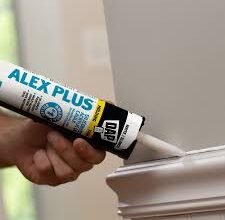The Hidden Dangers of Mould Fungus in Your Home

Mould fungus is one of the most common – and most overlooked – threats to a healthy home environment. Often hiding in plain sight, mould can spread silently behind walls, beneath floorboards, or in damp corners, thriving in areas with poor ventilation and excess moisture. While it may seem like a minor inconvenience, prolonged exposure to mould fungus can have serious consequences for both your property and your health.
Mould is a type of fungus that reproduces through airborne spores. These spores are constantly present in the air but only begin to grow when they land on moist, organic material. Bathrooms, basements, kitchens, and areas affected by leaks or flooding are all prime breeding grounds for mould. Once it begins to grow, it can spread rapidly, especially in humid environments.
There are thousands of species of mould, but the most notorious is Stachybotrys chartarum, commonly known as black mould. This type of mould produces mycotoxins, which can cause a range of health issues, especially in those with weakened immune systems, asthma, or allergies. Symptoms can include coughing, sneezing, skin irritation, headaches, and in severe cases, respiratory infections. Children and the elderly are particularly vulnerable to the effects of mould exposure.
Aside from the health risks, mould fungus can cause significant damage to buildings and personal belongings. It feeds on organic materials like wood, drywall, and fabric, leading to structural decay and costly repairs. Wallpaper may peel, paint can blister, and wood may rot – all signs that mould may be present. Left untreated, the structural integrity of a building can be compromised, requiring extensive remediation efforts.
Preventing mould growth begins with moisture control. Ensuring proper ventilation in areas like bathrooms and kitchens is critical. Use exhaust fans, open windows, and avoid drying clothes indoors where possible. Fix any leaks promptly, whether from plumbing, roofing, or condensation issues. It’s also essential to keep indoor humidity levels below 60%, ideally between 30–50%. A dehumidifier can help regulate moisture in particularly damp spaces.
Cleaning visible mould should be done with care. Small patches can often be cleaned with soapy water or specialised mould cleaners, but protective gloves and masks should be worn to avoid contact with spores. For larger infestations or mould hidden within walls and ceilings, it’s best to consult a professional mould remediation specialist.
Early detection is key. Musty odours, discoloured patches on walls or ceilings, or persistent dampness are all signs that mould may be present. Regular inspections, especially in older homes or buildings with a history of water damage, can help catch mould before it becomes a major issue.
Mould fungus may be invisible at first, but its effects are anything but. From health complications to property damage, the risks of unchecked mould are far too great to ignore. By understanding how mould grows, recognising the warning signs, and taking proactive steps to reduce moisture, you can protect both your home and your health from this silent intruder.



